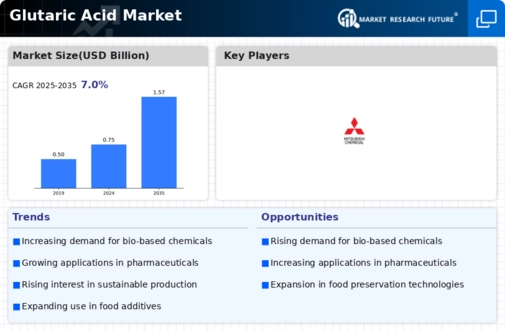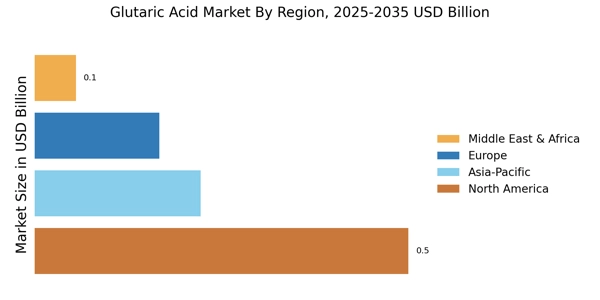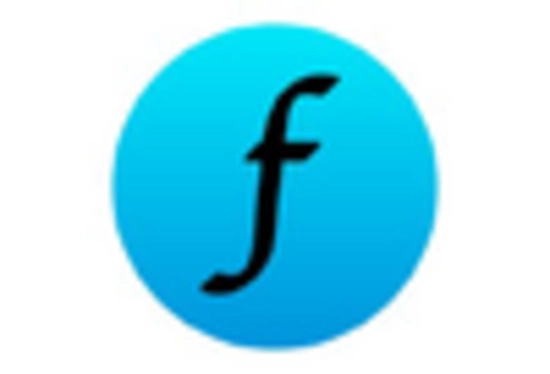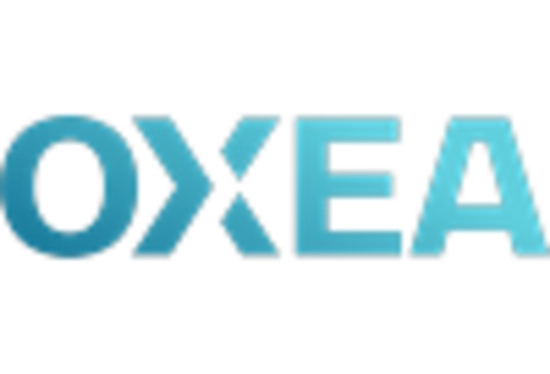Rising Demand in Food Industry
The Glutaric Acid Market is experiencing a notable increase in demand from the food sector, particularly as a food additive and preservative. This compound is utilized for its ability to enhance flavor and extend shelf life, which is becoming increasingly important in a competitive market. As consumers become more health-conscious, the need for natural preservatives is rising, leading to a shift towards organic and safe food additives. The food industry is projected to grow at a rate of approximately 4% annually, which could further bolster the demand for glutaric acid. This trend indicates a potential for manufacturers to expand their product lines to cater to this growing segment, thereby driving the Glutaric Acid Market forward.
Growth in Pharmaceutical Sector
The pharmaceutical sector is a significant driver for the Glutaric Acid Market, as this compound is utilized in the synthesis of various pharmaceutical intermediates. With the increasing focus on drug development and the rise in chronic diseases, the demand for effective pharmaceutical ingredients is on the rise. The market for pharmaceutical chemicals is expected to grow at a compound annual growth rate of around 5% over the next few years. This growth is likely to enhance the demand for glutaric acid, as it plays a crucial role in the production of certain medications. Consequently, the Glutaric Acid Market stands to benefit from this upward trend in pharmaceutical applications.
Technological Innovations in Production
Technological advancements are playing a crucial role in shaping the Glutaric Acid Market. Innovations in production processes, such as more efficient synthesis methods and improved purification techniques, are likely to reduce production costs and enhance product quality. These advancements may lead to increased competitiveness within the market, as manufacturers can offer glutaric acid at more attractive price points. Furthermore, the integration of automation and digital technologies in production facilities could streamline operations, resulting in higher output and reduced waste. This trend indicates a positive outlook for the Glutaric Acid Market, as it adapts to the evolving landscape of chemical manufacturing.
Increased Focus on Sustainable Practices
Sustainability is becoming a pivotal concern across various industries, including the Glutaric Acid Market. As companies strive to reduce their environmental footprint, there is a growing interest in bio-based and eco-friendly chemicals. Glutaric acid, which can be derived from renewable resources, is gaining traction as a sustainable alternative to petrochemical derivatives. This shift towards sustainability is expected to drive innovation and investment in the production of glutaric acid, potentially leading to a more robust market. The emphasis on sustainable practices may also attract environmentally conscious consumers, further enhancing the appeal of glutaric acid in various applications.
Expanding Applications in Chemical Manufacturing
The Glutaric Acid Market is witnessing an expansion in applications within the chemical manufacturing sector. This compound is increasingly used as a building block for the production of various chemicals, including plastics, resins, and agrochemicals. The chemical manufacturing industry is projected to grow steadily, driven by advancements in technology and increasing industrialization. As manufacturers seek to innovate and develop new products, the demand for versatile compounds like glutaric acid is likely to rise. This trend suggests a promising future for the Glutaric Acid Market, as it aligns with the broader growth trajectory of the chemical sector.


















Leave a Comment